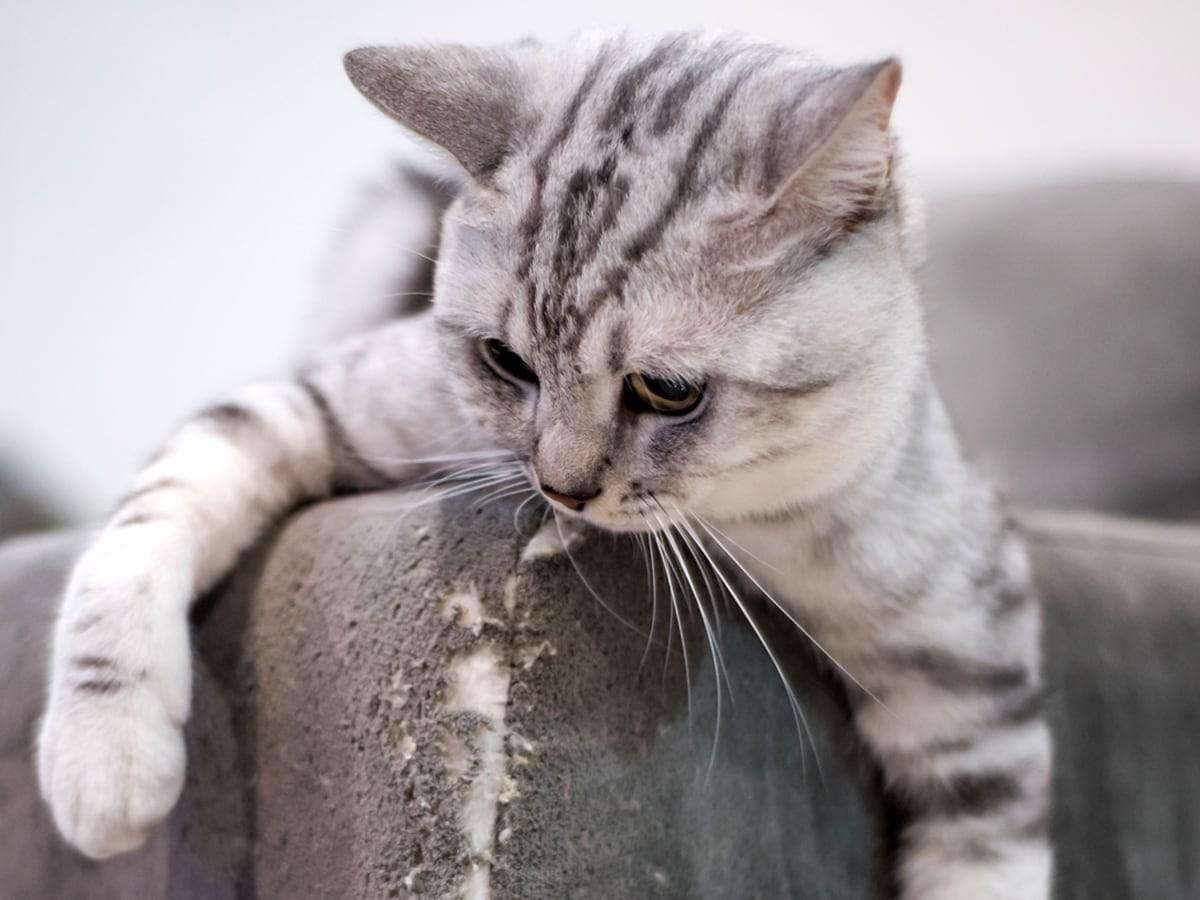Cats are natural scratchers, and it's important to provide them with an appropriate outlet for this behavior to help prevent damage to your furniture, carpets, and other household items. In this article, we'll explore why cats scratch and what you can do to help redirect their scratching behavior.
Why Do Cats Scratch?
Cats scratch for several reasons, including:
Territory Marking:
Scratching leaves both a visual and scent mark, allowing cats to communicate with each other and mark their territory. This is an important instinctual behavior that helps cats establish their dominance and protect their territory.
Exercise:
Scratching is a natural form of exercise and stretching for cats. Scratching helps to stretch and flex their muscles, particularly in their paws and back. Regular scratching helps to keep cats physically fit and mentally stimulated, which is important for their overall well-being.
Claw Maintenance:
Scratching helps cats shed the outer layer of their claws and keep them sharp.
Stress Relief:
Scratching can help cats relieve stress and anxiety. Scratching is a natural behavior for cats, and it helps them to relieve stress and tension in their bodies. When cats scratch, they release endorphins that make them feel good.
Redirecting Your Cat's Scratching Behavior
Redirecting your cat's scratching behavior is important to help protect your furniture and carpets. Here are some tips to help redirect your cat's scratching behavior:
Provide a Scratching Post:
A scratching post is a great way to provide your cat with an appropriate place to scratch. Choose a post made of a material that your cat likes, such as sisal rope or corrugated cardboard.
Place the Scratching Post in the Right Location:
Place the scratching post in an area where your cat spends a lot of time, such as near their sleeping area or in a common room. Make sure the post is stable and doesn't wobble.
Make the Scratching Post More Attractive:
Rub catnip or spray cat pheromones on the scratching post to make it more attractive to your cat.
Provide Multiple Scratching Posts:
Provide multiple scratching posts throughout your home, especially in rooms where your cat spends a lot of time.
Use Positive Reinforcement:
Reward your cat when they use the scratching post. Praise them and give them a treat when they use the post instead of your furniture.
Discourage Scratching on Inappropriate Surfaces:
If your cat is scratching on inappropriate surfaces, such as your furniture or carpets, use a deterrent spray or double-sided tape to make the surface less attractive to your cat.
Trim Your Cat's Claws:
Regularly trim your cat's claws to help prevent damage to your furniture and carpets. If you're not comfortable trimming your cat's claws, your veterinarian or a professional groomer can do this for you.
Additional Tips for Success:
Changing your cat’s scratching behavior will not happen overnight. In order to make this change and help it stick, here are a few additional tips for success.
Consistency:
Consistency is key when it comes to changing a cat's scratching behavior. Consistently providing appropriate scratching surfaces, discouraging them from scratching the wrong surfaces, and providing positive reinforcement when the cat uses the appropriate scratching surface. Each of these steps can help to change your cat’s scratching behavior.
Patience:
It's important to remember that scratching is a natural behavior for cats, so it may take time for them to adjust to new scratching surfaces or areas. It's also important to avoid punishing your cat for scratching, as this can cause anxiety and may even lead to further scratching.
Understanding Your Cat’s Preferences:
By identifying the type of surface your cat prefers to scratch, whether it be carpet, cardboard, or a specific texture, you can provide them with a suitable scratching post or pad. Additionally, placing the scratching post or pad in a location that your cat frequents and enjoys can help encourage them to use it instead of your furniture.
Conclusion
Scratching is a natural behavior for cats and providing them with an appropriate outlet for this behavior is important. By providing your cat with a scratching post, placing it in the right location, and using positive reinforcement, you can help to redirect your cat's scratching behavior and protect your furniture and carpets. Remember, it's important to be patient and consistent when redirecting your cat's behavior, and always reward them for using the scratching post instead of inappropriate surfaces.
How Spot Pet Insurance Can Help
Spot plans offer pet parents the opportunity to customize their coverage and choose a plan that best fits the needs of their pet family and their budget. With Spot Pet Insurance plans, pet parents have the option to choose an unlimited annual limit with no per-incident caps, no lifetime caps, and a reimbursement rate of up to 90% for eligible vet bills. Spot Pet Insurance plans offer coverage for accidents, illnesses, and pet parents can choose to add preventive care coverage for an additional cost. Preventive care coverage covers the eligible costs of routine exams, certain vaccines, dental cleaning, and many other benefits. To learn more about Spot Pet Insurance plans, get a free quote!
